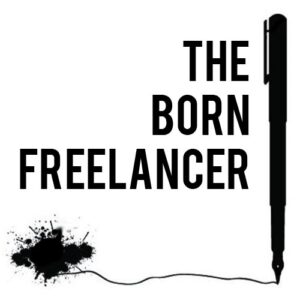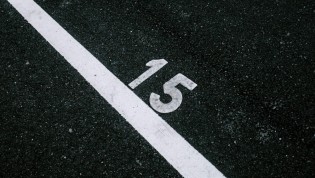This series of posts by the Born Freelancer shares personal experiences and thoughts on issues relevant to freelancers. Have something to add to the conversation? We’d love to hear from you in the comments.

The Born Freelancer on Daily Structure
Perhaps the greatest advantage of freelancing is that our time is our own. It is the definitive reason why many of us become and remain freelancers.Recently, a veteran broadcaster told me the freedom to decide what to do with her time was the most appealing aspect of going freelance. That included making time with family and friends.
I wholeheartedly concur. However, if we fail to properly manage it, time can become our number one nemesis, denying us any hope of achieving our goals.
The trick is to recognize and prioritize goals and the activities required to achieve them. Some call it something like “time management.” I call it living productively within the freedom of the freelancing life. It takes a certain toughness of mind.
The human need for structure
Nine-to-fivers have a daily externally-imposed structure. The danger to any freelancer is that a whole day or week or more without a defined schedule or structure can effortlessly disappear. Think of the recent pandemic. Without regular structures many folk could no longer discern what day it was or even what they should be doing.So what is needed is to identify goals, figure out requisite activities and then develop tools to facilitate a system to prioritize and organize them. It’s a way of creating your own structure.
Identifying goals, defining activities
What goals do you want to achieve with your time? What do you need to do to reach them?For me, my freelancing life goals are best facilitated by the following activities:
Research
The goal of research is to find out about stuff. I need to know lots of stuff to write about it. Research may take place online or at the library. It might require personal interviews or visiting locations. It may help me decide what I want to write or it may be on topics already chosen. It may also include investigating creative outlets I wish to market/sell my services to.Marketing/selling
The goal of marketing/selling is to actually make a sale. It can include short term selling such as cold calling, emailing, social media, in person interviews, etc as well as longer term marketing such as maintaining a brand presence online, attending future networking opportunities, and so on.Creative work
Creative work’s goal is to be the thing you do in order to be the most successful at being you. It may include work you have been commissioned to do immediately as well as speculative work you hope to sell one day (like a novel). You will probably have several creative projects on the go at once.Admin(istration)
The goal of administration is to facilitate the forward motion of your freelancing. This can include sending out invoices, paying taxes, archiving your work, and so on. It is easy to let admin pile up but this will only impede every other aspect of your freelancing life.Personal time
The goal of allocating yourself personal time is to make sure there’s plenty of it to do everything else in your life! This should include seeing family and friends, tending to your health, relaxing, and so on. Without including it as an actual category it is easily put to one side. Its absence can cause mental and physical distress. Some days there is nothing more important than making time for lunch with an old friend.Prioritization using visualization
The next step is to identify the priority for each activity.One of the keys to successful freelancing is flexibility. One day you may be on deadline so “creative work” will dominate. Another day personal matters may take precedence. It is always your decision. How much time is needed for each activity will be unique to each individual, learned by self-awareness gained through experience.
So you need to create a daily flexible structure or schedule. There are, of course, numerous smartphone apps and computer programs designed to help you do just that.
I remain an advocate of old-school large-scale visualization as the definitive tool to help make my daily structure come alive.
Namely, a huge cork bulletin board upon which I tack small coloured filing cards with each day’s required activities. The board is divided vertically into work days and horizontally into work hours and my daily goals can be listed in priority. The colours indicate categories, with specifics written in. This gives me an immediate and graphically striking visualization of my day and week ahead and allows me to stop worrying about what I should be doing and just get on with it.
Don’t have a bulletin board? Use a spare wall, filing cards and sticky tack. Or how about a huge whiteboard. It can be immediately erased and rewritten to adapt to changing aspects of your day. A colleague uses the bare side of their fridge with small magnets affixed to slips of paper. This too is easy to rearrange.
I also employ a large wall calendar to look at the month ahead to see what deadlines are approaching.
Whatever the method, such an attention-focusing visualization tool allows me to instantly “see” and organize my time. I can look at the board and know at a glance what I should be doing, what I’ve been doing and what still needs to be doing. Changes are easily accommodated by moving the filing cards around. Need to make more sales? Put cold-calling on top of the list to do tomorrow. I update my week’s schedule every night as I see how my day has turned out and what remains a priority.
With this simple but proven system I have been able to successfully live my freelancing life and get the most out of my time. Something similar might prove helpful for you too.
The takeaway
Many freelancers claim that breaking away from nine-to-five drudgery was the big reason they became freelancers.But I cannot imagine surviving without some kind of daily schedule .
So although having structure may rankle the free-spirit within you, take comfort in the fact that it will be your structure, created by you for you, based upon your own unique needs.
For the dedicated freelancer, it’s hard to imagine living any other way.
Search
Recent Posts





